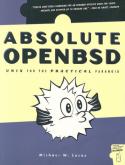Python Programming: An Introduction to Computer Science Ссылки
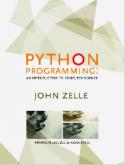

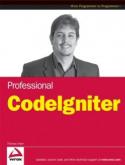
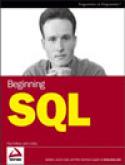
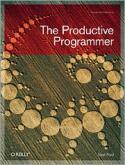
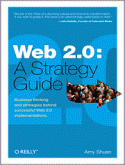
Web 2.0 makes headlines, but how does it make
money? This concise guide explains what's different about Web 2.0 and
how those differences can improve the bottom line. Whether you're an
executive, a small business owner, or an entrepreneur, Web 2.0: A Strategy Guide
illustrates through real life examples how various businesses are
creating new opportunities on today's Web. This book is about strategy
rather than the technology itself.Web 2.0 makes headlines, but how
does it make money? This concise guide explains what's different about
Web 2.0 and how those differences can improve your company's bottom
line. Whether you're an executive plotting the next move, a small
business owner looking to expand, or an entrepreneur planning a
startup, Web 2.0: A Strategy Guide illustrates through real-life examples how businesses, large and small, are creating new opportunities on today's Web.This book is about strategy. Rather than focus on the technology, the
examples concentrate on its effect. You will learn that creating a Web
2.0 business, or integrating Web 2.0 strategies with your existing
business, means creating places online where people like to come
together to share what they think, see, and do. When people come
together over the Web, the result can be much more than the sum of the
parts. The customers themselves help build the site, as old-fashioned
"word of mouth" becomes hypergrowth.
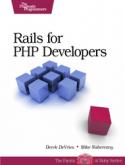
As a PHP developer, you have some great tools for developing web applications. Ruby on Rails is another key tool to add to your web development toolbox. Rails is a high-level web development framework that emphasizes high productivity and clean code. However, the Ruby language and Rails framework take a different approach from the way many PHP developers write applications.
Ruby lies at the foundation of Rails, and we’ll teach you the Ruby language from the beginning by building on your existing foundation of PHP. We’ll explore Ruby through parallel code examples that illustrate the differences between the languages, and help you understand the Ruby idioms and how they differ from popular PHP code and style.
You’ll then learn the Rails framework by iteratively building a complete application, starting from the home page through to a finished product. Along the way, you’ll build your skills as a Rails developer by learning the Rails fundamentals such as MVC structure, domain modeling, and testing.
In addition to serving as a guide to learning both Ruby and Rails from a PHP developer’s perspective, this book includes two extensive reference chapters. They map the most common PHP tasks to their equivalents in the Ruby and Rails world, giving you at-a-glance information that you’ll refer to often.

The practice of enterprise application development has benefited from the emergence of many new enabling technologies. Multi-tiered object-oriented platforms, such as Java and .NET, have become commonplace. These new tools and technologies are capable of building powerful applications, but they are not easily implemented. Common failures in enterprise applications often occur because their developers do not understand the architectural lessons that experienced object developers have learned.
Patterns of Enterprise Application Architecture is written in direct response to the stiff challenges that face enterprise application developers. The author, noted object-oriented designer Martin Fowler, noticed that despite changes in technology--from Smalltalk to CORBA to Java to .NET--the same basic design ideas can be adapted and applied to solve common problems. With the help of an expert group of contributors, Martin distills over forty recurring solutions into patterns. The result is an indispensable handbook of solutions that are applicable to any enterprise application platform.
This book is actually two books in one. The first section is a short tutorial on developing enterprise applications, which you can read from start to finish to understand the scope of the book's lessons. The next section, the bulk of the book, is a detailed reference to the patterns themselves. Each pattern provides usage and implementation information, as well as detailed code examples in Java or C#. The entire book is also richly illustrated with UML diagrams to further explain the concepts.
Armed with this book, you will have the knowledge necessary to make important architectural decisions about building an enterprise application and the proven patterns for use when building them.
The topics covered include:
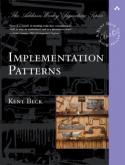
Beck collects 77 patterns for handling everyday programming tasks and writing more readable code. This new collection of patterns addresses many aspects of development, including class, state, behavior, method, collections, frameworks, and more. He uses diagrams, stories, examples, and essays to engage the reader as he illuminates the patterns. You’ll find proven solutions for handling everything from naming variables to checking exceptions.
This book covers
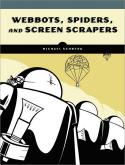

Widely praised for its in–depth coverage of Drupal internals, bestselling Pro Drupal Development has been completely updated for Drupal 6 in this latest edition, and there are even more tricks of the trade to help you further yourself as a professional Drupal developer.
Assuming you already know how to install and bring a standard installation online, John K. VanDyk gives you everything else you need to customize your Drupal installation however you see fit. Pro Drupal Development, Second Edition delves deep into Drupal internals, showing you how to take full advantage of its powerful architecture.
Web developers maintaining and creating sites with Drupal. It is assumed that you already know the basics of Drupal and are able to install and bring up a basic installation. This book takes you deeper into the internals of Drupal and teaches how to tweak and modify it in order to create that perfect web site. Simply put, if you are working with Drupal, you need Pro Drupal Development, Second Edition.
